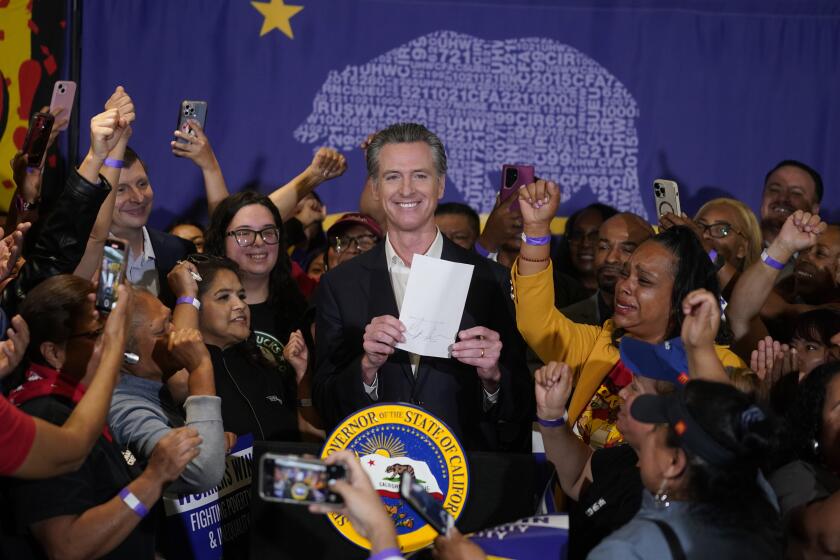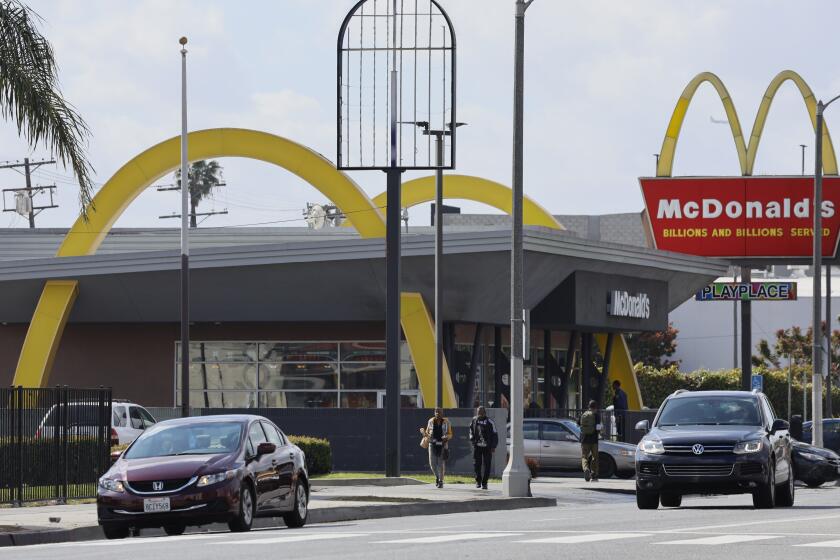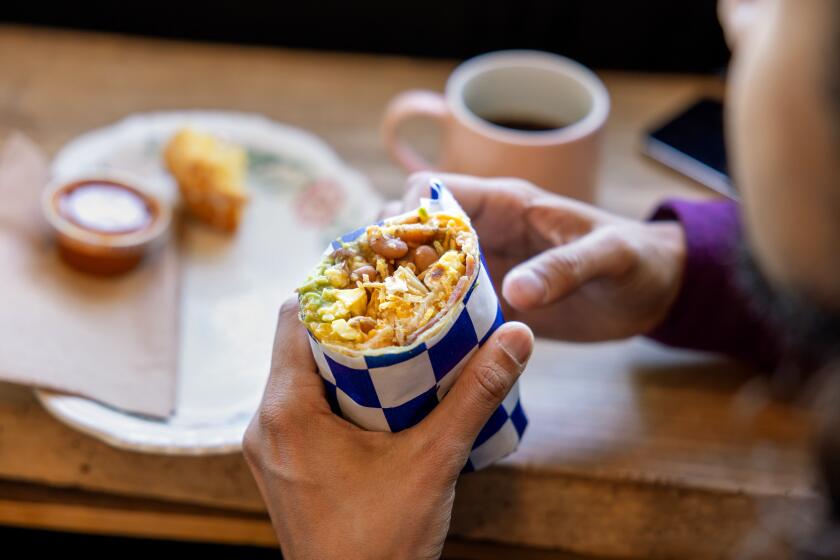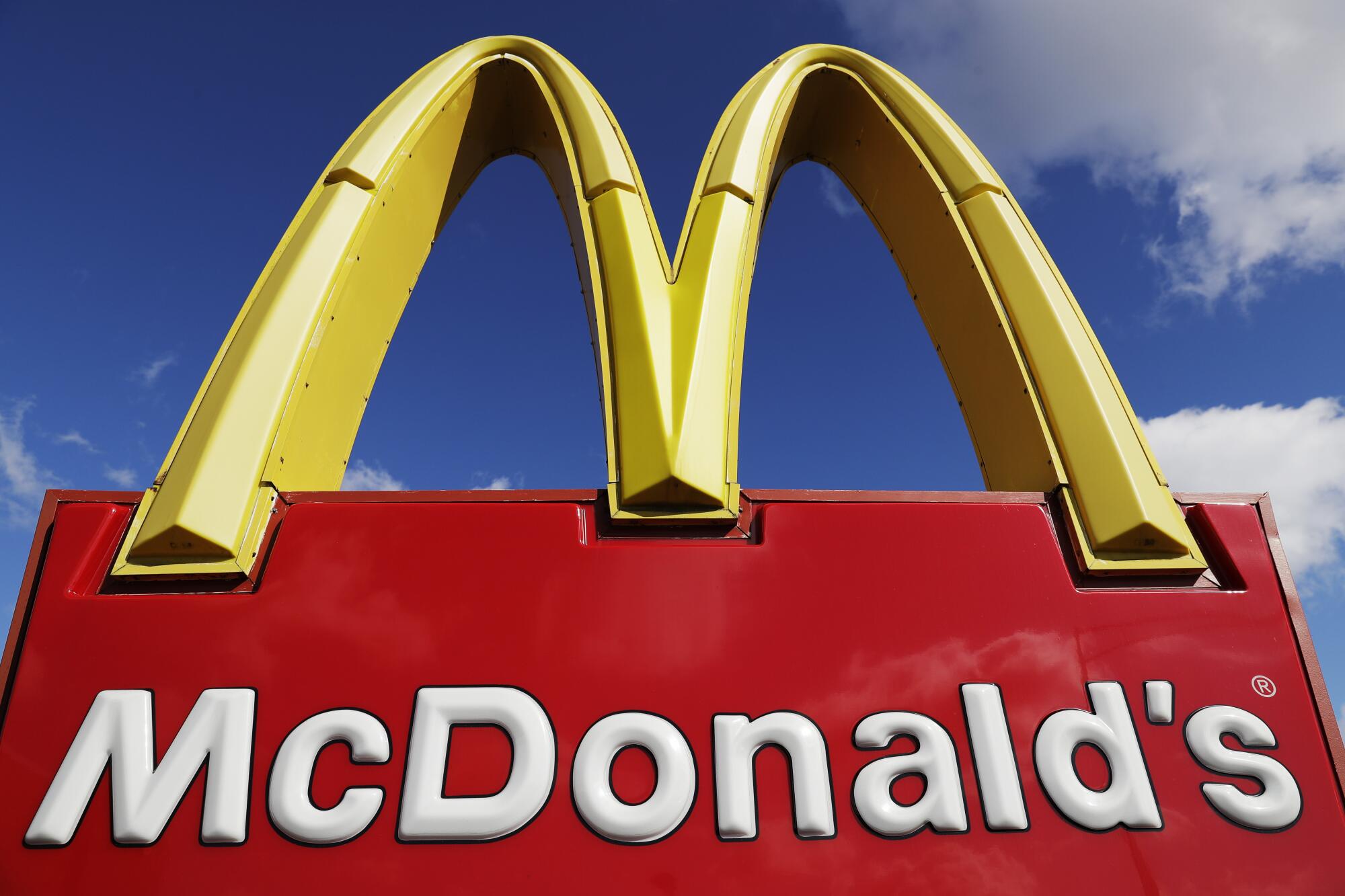
Millions of American families are hitting the road to start summer vacation, and ordering food on the run tends to be par for the course. It couldn’t come at a better time. Fast food joints are in the midst of a budget-meal war, offering promotions to lure customers back to their restaurants despite inflation woes and a minimum-wage increase in California and other states.
Starting June 25, McDonald’s will offer a month-long deal featuring a combo meal —either a McChicken, a McDouble or four-piece chicken nuggets, small fries and a small drink — for $5.
After McDonald’s announcement last month, other fast food restaurants followed suit. Wendy’s announced its $3 limited-time breakfast combo meal and Burger King trumpeted that it planned to bring back its $5 Your Way Meal.
In addition, fast food mobile apps continue to offer deep discounts.
App relief
Earlier this week, a Big Mac with medium fries and medium drink cost $11.79 before tax at a McDonald’s in Santa Ana. That same meal ordered via a mobile app for pickup at the same location cost $6.50 before tax, a savings of $5.29.
But the prices and deals tend to vary depending on the user.
Fast-food lobbyists say the higher California minimum wage law led to a loss of nearly 10,000 jobs. The claim is baseless.
Diners have taken to complaining on Reddit about the McDonald’s mobile app. Some say the deals decrease with use. Others say their friends or partners were getting a better deal on the app than they were getting. A few mentioned that they could find better deals by just walking in and ordering at their local McDonald’s.
The plethora of promotional deals come after diners blasted fast food companies on social media earlier this year for rising prices.
In response, Joe Erlinger, president of McDonald’s USA, said in an open letter last month that the average price of McDonald’s menu items is up an estimated 40% since 2019.
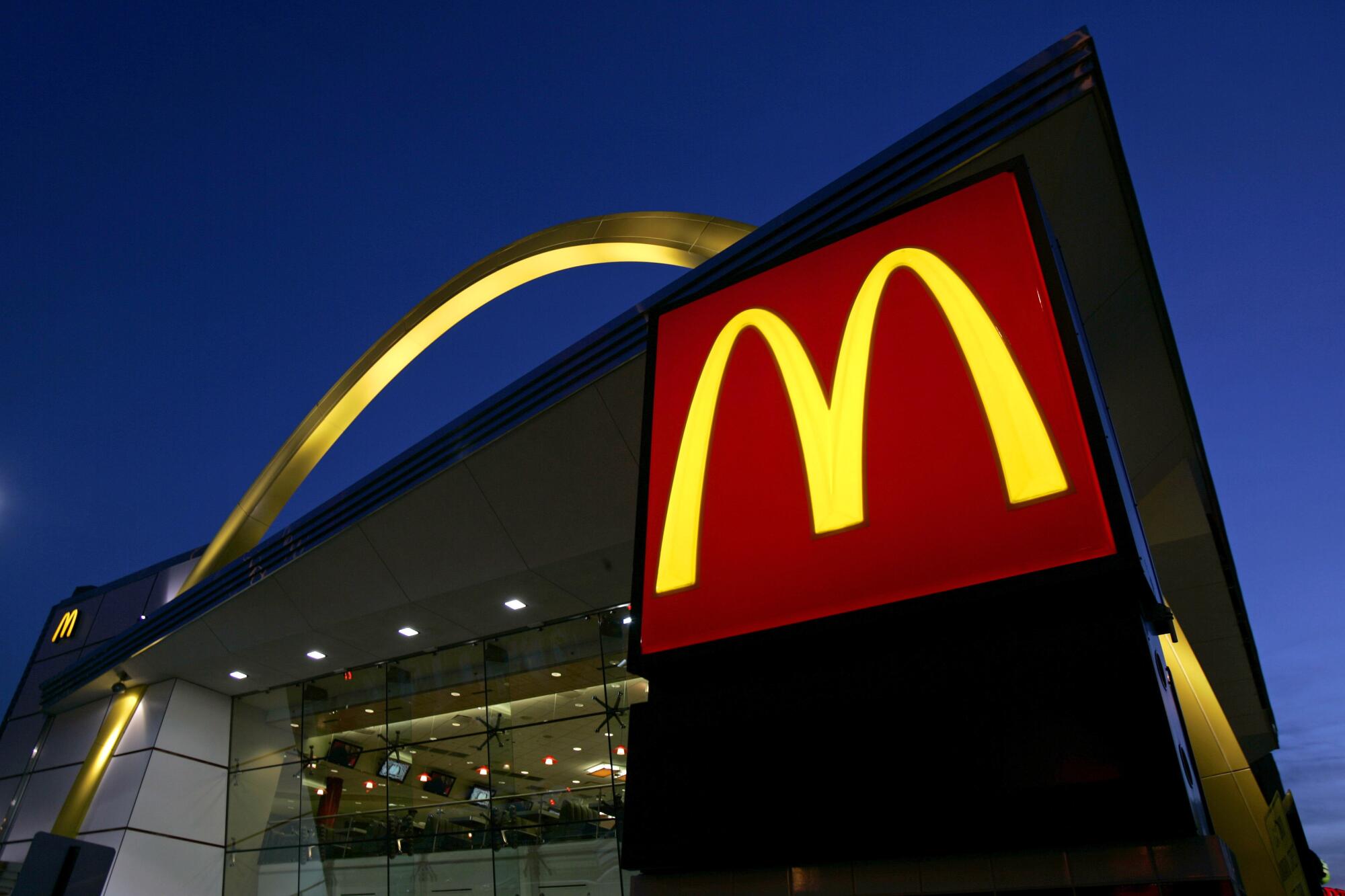
“Recently, we have seen viral social posts and poorly sourced reports that McDonald’s has raised prices significantly beyond inflationary rates. This is inaccurate,” Erlinger wrote.
“The average price of a Big Mac in the U.S. was $4.39 in 2019,” he said. “Despite a global pandemic and historic rises in supply chain costs, wages and other inflationary pressures in the years that followed, the average cost is now $5.29. That’s an increase of 21% (not 100%),” as unsubstantiated claims allege on social media.
Quick-service restaurants said the increases were in response to rising inflation and labor costs — partly due to hikes in minimum wage not just in California but throughout the country.
California’s mandatory minimum wage for fast food workers took effect Monday, with $20 an hour now in place. Here’s what you need to know.
It’s true that quick-service restaurants such as McDonalds have had to contend with increased costs, but they are by no means hurting, said Shubhranshu Singh, an associate professor at Johns Hopkins University who specializes in quick-service marketing.
“They are not struggling,” Singh said. “Inflation is going up. Wage rates are going up. But profit for McDonald’s is also going up.”
Global comparable sales for McDonald’s grew nearly 2% in the first quarter of the year, according to the latest statistics made available by the company. The fast-food giant described this profit increase as having “benefited from average check growth driven by strategic menu price increases.”
Price-weary diners have taken notice and become fed up with the price hikes, choosing to eat less fast food and protesting on social media that their go-to budget meals were no longer wallet-friendly, Singh said.
Several diners took aim at McDonald’s, griping on TikTok about the company charging more for food that’s supposed to be affordable.
“This is $3 worth of food,” said a customer who held up a hash brown. “Something doesn’t seem right here.”
“McDonald’s has gotten too cocky,” said another customer. “Y’all not supposed to be expensive.”
One diner called it “absurd” that she’d paid $4.59 for a medium order of french fries.
And then there was the uproar over a McDonald’s location in Connecticut charging $18 for a Big Mac combo meal. The photo sparked a nationwide debate on soaring fast-food prices.
Making choices
Most McDonald’s in the United States are independently franchised, so prices vary depending on where one visits.
Increased fast food prices ultimately led to slower-than-expected sales at various quick-service restaurants, such as McDonald’s, Starbucks and Pizza Hut.
“Consumers are always making choices,” said restaurant analyst Sara Senatore at Bank of America. “When the value proposition starts to diminish, consumers will make other choices.”
Up until fairly recently, consumers were willing to pay more for quick-service food. When fast food prices started to soar in 2022, consumers just went along because prices everywhere had surged due to inflation, Senatore said.
But now inflation has lessened. Grocery prices have fallen and budget-conscious consumers may no longer see fast food as the clear-cut affordable choice, she said.
Enter the value meals.
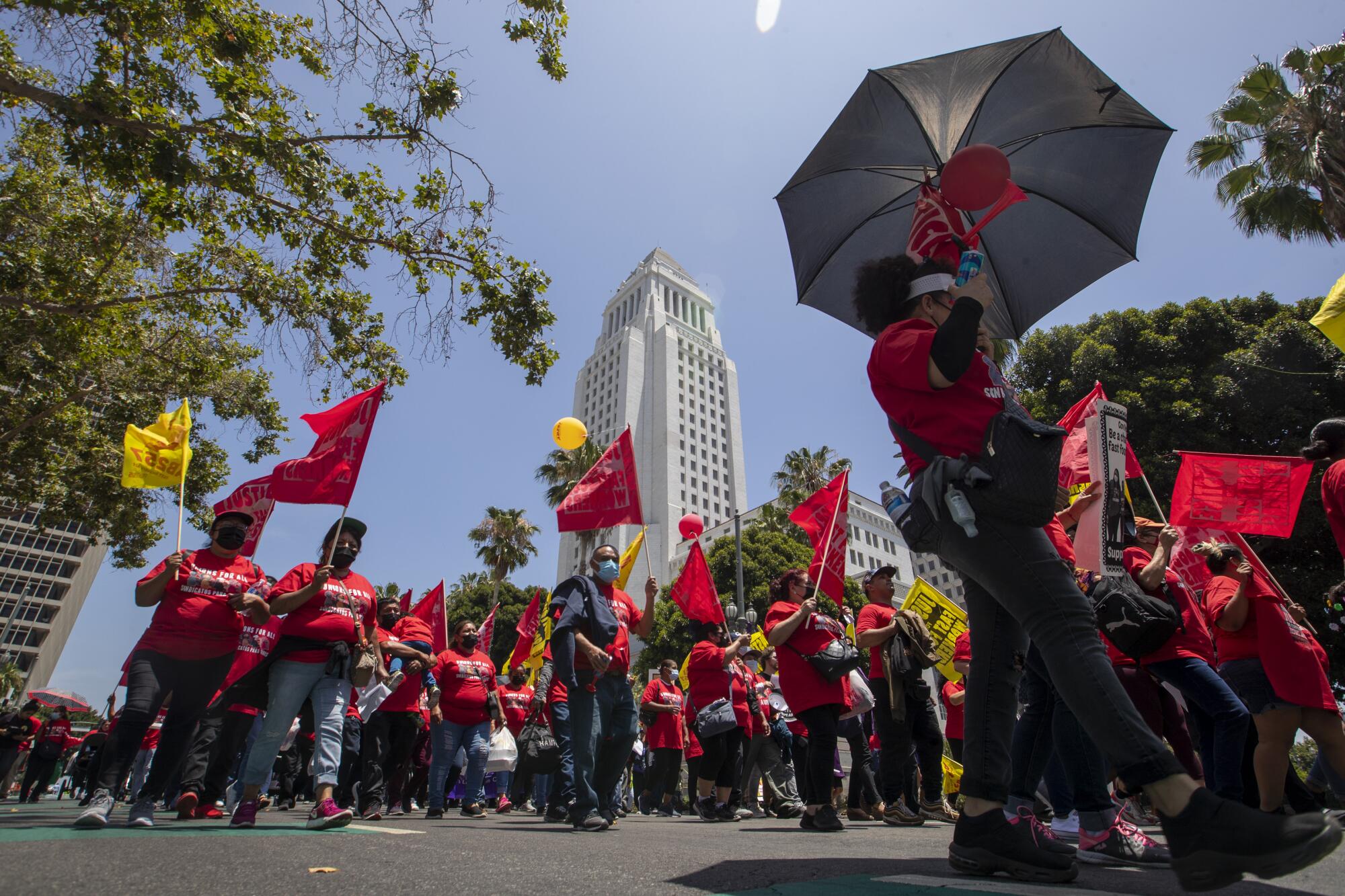
Budget meals aren’t new. In the 1980s, McDonald’s, Wendy’s and Burger King engaged in a series of advertising campaigns known as the Burger Wars competing for customers in the then-flourishing fast food market.
“The hope is that the consumer will go there and maybe buy something additional to the value meal and then want to return even when there is no deal,” Singh said.
But the promotions, analysts warned, can’t last forever.
“It’s not sustainable,” Singh said. “I don’t expect any of these deals to stay.”
More to Read
Eat your way across L.A.
Get our weekly Tasting Notes newsletter for reviews, news and more.
You may occasionally receive promotional content from the Los Angeles Times.
